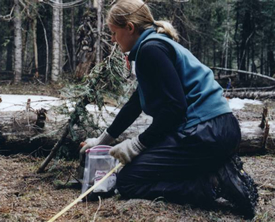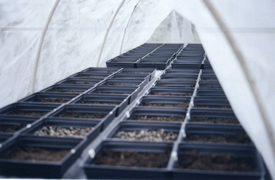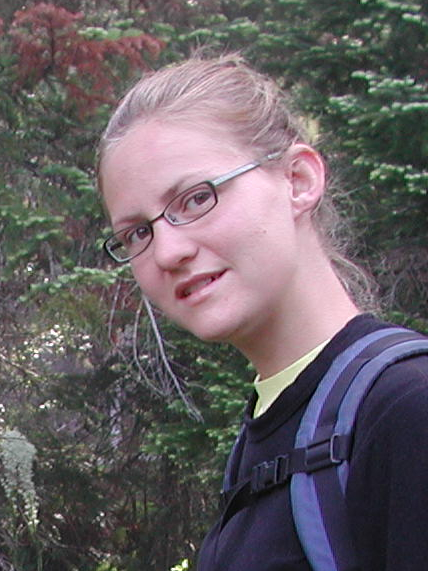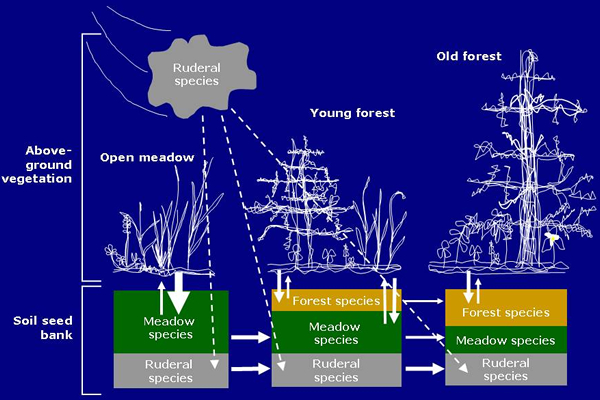|
Soil
seed banks contribute to the diversity and dynamics of many plant
communities. In some systems they are critical for maintaining species’
populations or restoring native plant communities. [Conceptual
model]
We examined the composition of the soil seed bank at Bunchgrass
Ridge to determine whether meadow species maintain viable seeds
in the soil, and by implication, whether the seed bank can contribute
to meadow restoration if conifers are removed.
We
addressed the following questions:
-
Do meadow species maintain viable seeds in the soil?
-
Do the density and diversity of seeds decline as meadow is replaced
by forest?
- What
types of species dominate the seed bank?
- What
is the potential for seed banks to contribute to meadow restoration
if trees are removed?
Methods
| Collecting
soil samples |
 |
Field
sampling. Samples
of the soil seed bank were taken in May 2004 from subplots also
sampled for forest age
structure and ground vegetation. A total of 209 subplots was
sampled.
Sampling
was stratified, using a simplification of the chronosequence
to represent three distinct stages of encroachment: open meadow,
young forest, and old forest (see table, right).
In May 2004, three soil cores (6 cm in diameter and 10 cm deep)
were extracted from each subplot and combined (~850 cm3/subplot).
In Jul and Aug 2004, above-ground vegetation was sampled in the
same subplots.
Analyses.
Germinants were tallied into one of three groups defined by habitat
affinity: ruderal, meadow, and forest understory species (see Plant
species list). For each group, ANOVA or Kruskal-Wallis tests
were used to assess differences in species richness (number of taxa
per subplot) or germinant density among the three stages of encroachment. |
| Greenhouse
methods |
| Germination
flats |
 |
| Soil
samples were mixed with sterile potting soil and
placed in germination flats in the University of
Washington greenhouse. Seedling emergence was monitored
for seven months. |
|
|
| Light
availability, tree density, and basal area among open meadow,
young forest, and old forest subplots. |
| Structural
variable |
Open
meadow |
Young
forest |
Old
forest |
| Transmitted
light (%) |
46 |
22 |
17 |
| Tree
density (no./ha) |
96 |
1,552 |
1,172 |
| Basal
area (m2/ha) |
6 |
36 |
116 |
|
![]()
![]()
![]()
![]()



